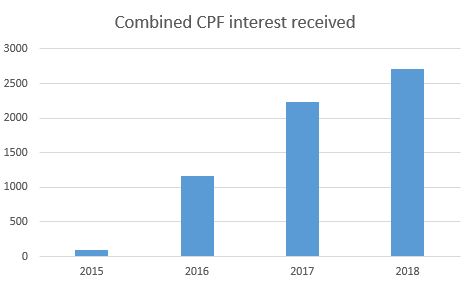This month will mark the 2nd year since I applied
for my BTO. Having just visited the location and seeing the building at mid-stage
of completion, I wanted to pen down some thoughts regarding my financial
housing journey.
For us, our future home was in a mature estate with a good
location and was thus “expensive” for a BTO. I remember being quite anxious
about the overall quantum we had to pay, since we had only just started working.
I had calculated that based on our combined salary then,
even after CPF deductions we would be facing a negative cash outflow when the
house arrived. Yikes!
Desperate to avoid this, I formed a plan to rein in our
mortgage by increasing our down payment. Our goal was to bring the monthly
mortgage payable to under our monthly CPF-OA contribution.
During this time I read many commentaries online that advocated
either paying down as much as possible or paying down as little as possible and
investing the rest. There are well written pros and cons to both, but like any
advice, you have to tailor it to your own situation and personal circumstances.
For me the second strategy made more sense, as a fully paid
off home has no cash flow, and there are many ways to save on interest in the
future including partial payments. Besides, the interest savings on a BTO is
not as significant, especially if you intend to flip it at some point. Thus, I
had to strike a balance between paying down and reducing the mortgage and
keeping enough dry powder to constantly invest.
To do so, my rule was to treat only the asset price of the
house as the investment component. Thus we paid for the option fee, stamp duty
and optional components in cash. I remember at the time this meant a having to
make difficult decisions for fund allocation.
Looking at our finances right now, our combined CPF-OA
balances equate to about 13% of listed value of the home. Which should mean
that we are on track to paying off close to 25% of the value of the house when
it arrives (including 5% already paid). Based on this figure, it would also bring
our monthly mortgage to below our CPF-OA contribution with some change to spare.
Along the way, it really did help that we experienced wage
growth which allowed us to grow the CPF-OA contribution, but this does not
detract from the fact that we had a plan and stuck to it.
While I always advocate for couples to buy homes within what
they can afford, I think it’s also important to have game plan on how to afford
something and looking at the value of the item rather than the absolute price.
Understanding the value of what you are buying is also very
important. I know of couples who bought relatively cheaper flats but are
dragging their feet moving in as the location is not as prime and with fewer amenities
in the vicinity.

